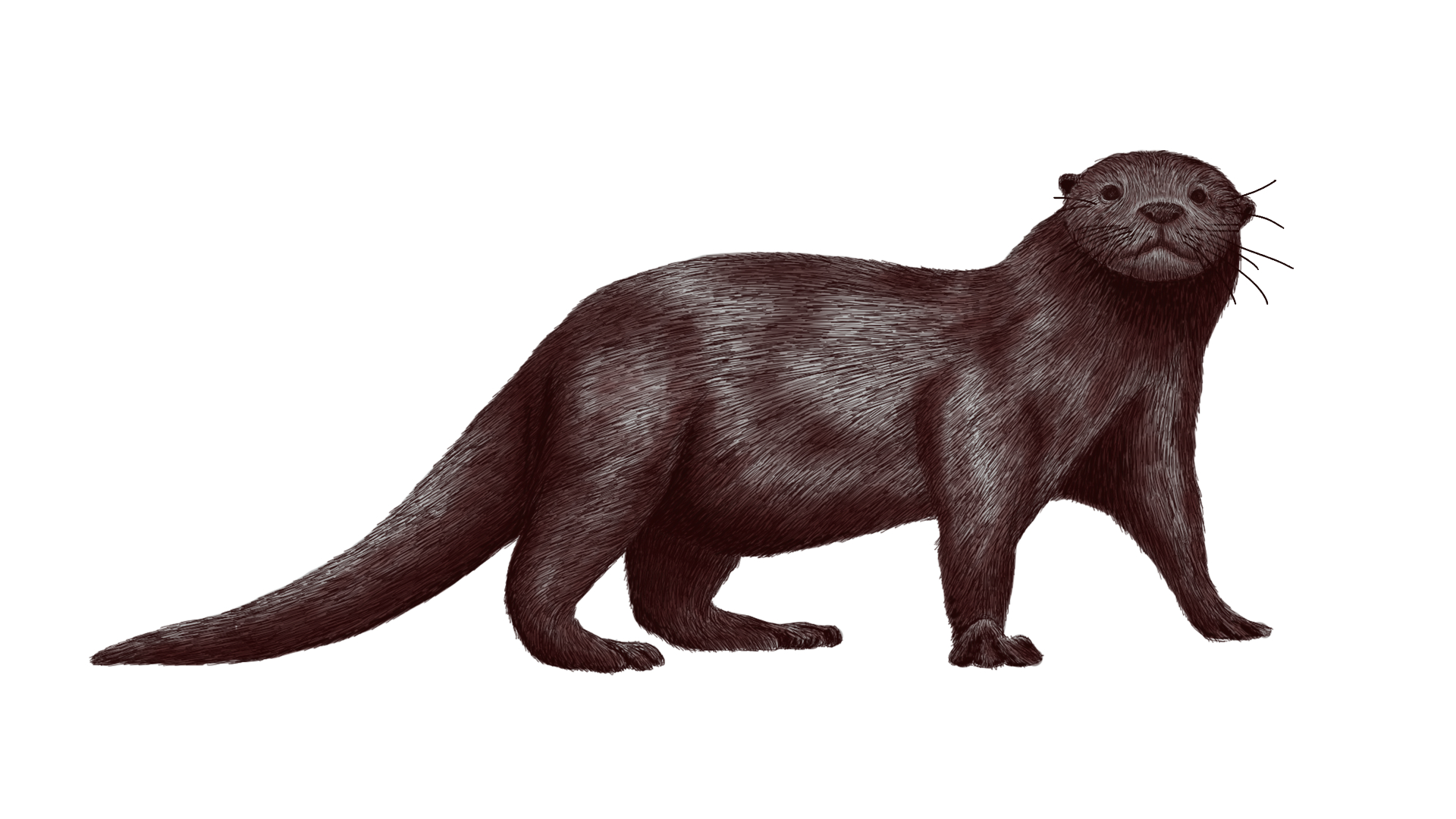Lion-size otters prowled Ethiopia 3 million years ago
The gigantic otters spent their lives on land.

The fossilized remains of a gigantic, lion-size otter that lived alongside early humans have been unearthed in Ethiopia, a new study finds.
The species, named Enhydriodon omoensis, lived about 3.5 million to 2.5 million years ago and co-existed with a group of extinct human relatives known as australopithecines, bipedal hominids that lived from 4.2 million to about 2 million years ago. E. omoensis was colossal compared with its cute contemporary counterparts, and the study authors estimated that it weighed more than 440 pounds (200 kilograms).
E. omoensis may have eaten terrestrial and aquatic prey, either by hunting or scavenging, but the researchers think it spent its days on land, rather than in water.
"The peculiar thing, in addition to its massive size, is that [isotopes] in its teeth suggest it was not aquatic, like all modern otters," study co-author Kevin Uno, a geochemist at Columbia University's Columbia Climate School in New York, said in a statement. "We found it had a diet of terrestrial animals, also differing from modern otters."
Related: Mammals ballooned in size after the dinosaurs went extinct. Here's how they did it.
Researchers named the new species E. omoensis after the Lower Omo Valley in southwestern Ethiopia where it was discovered. They estimated its weight based on teeth and femur fossils. The researchers also measured the ratios of isotopes — variations of an element with differing numbers of neutrons — of stable oxygen and carbon in tooth enamel, as oxygen values can indicate how dependent a species was on water.
Scientists previously thought that the Enhydriodon genus was semiaquatic, feeding on animals such as mollusks and turtles. However, the researchers found that the isotope values in E. omoensis teeth more closely matched those in fossil teeth of terrestrial mammals, such as big cats and hyenas, in the same rock deposits.
Sign up for the Live Science daily newsletter now
Get the world’s most fascinating discoveries delivered straight to your inbox.
E. omoensis is one of several gigantic otter species that lived across Eurasia and Africa up until about 2 million years ago. For example, Enhydriodon dikikae, also from Ethiopia, may have weighed 440 pounds, according to a 2011 study published in the Journal of Vertebrate Paleontology. The authors of the 2011 paper wrote that E. dikikae's size was "more suggestive of a bear than of a modern otter."
The new study likens the size of these gigantic otters to lions (Panthera leo), which can measure up to 10 feet (3 meters) long and weigh 330 to 550 pounds (150 to 250 kg). The massive, extinct otters of Ethiopia would have dwarfed the otters living in North American rivers today, which typically measure up to 4 feet (1.2 m) long and weigh no more than 30 pounds (14 kg), according to the National Wildlife Federation.
The biggest of all modern otters are South America's giant otters (Pteronura brasiliensis), and northern sea otters (Enhydra lutris kenyoni) from the coastal waters of southern Alaska, British Columbia and Washington. Giant otters are longer and can grow to be 6 feet (1.8 m) long, on average, and weigh up to 70 pounds (32 kg), according to Zoo Atlanta. Northern sea otters can measure up to 5 feet (1.5 m) long, but they're heavier than their South American cousins and can weigh more than 100 pounds (45 kg), according to the Alaska Department of Fish and Game.
The study was published online Sept. 5 in the French journal Comptes Rendus Palevol.
Originally published on Live Science.

Patrick Pester is the trending news writer at Live Science. His work has appeared on other science websites, such as BBC Science Focus and Scientific American. Patrick retrained as a journalist after spending his early career working in zoos and wildlife conservation. He was awarded the Master's Excellence Scholarship to study at Cardiff University where he completed a master's degree in international journalism. He also has a second master's degree in biodiversity, evolution and conservation in action from Middlesex University London. When he isn't writing news, Patrick investigates the sale of human remains.









